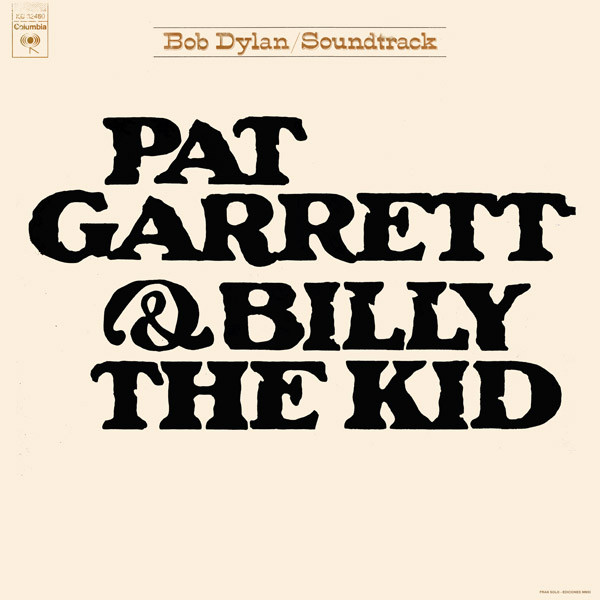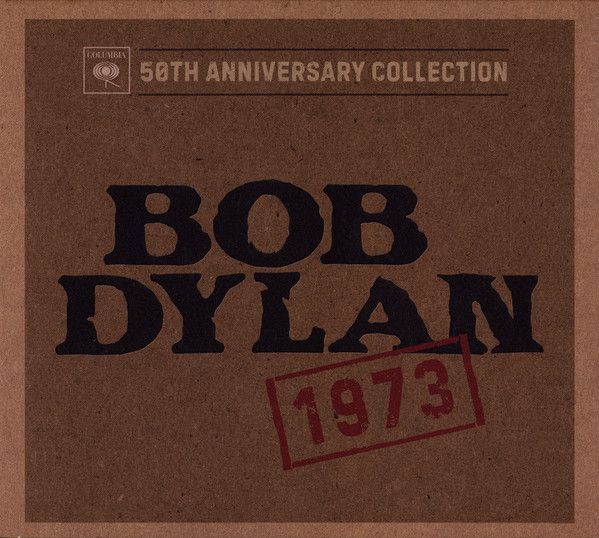 In the midst of his writing drought, Bob was asked to contribute music to the film Pat Garrett & Billy The Kid, starring James Coburn and Kris Kristofferson in that order. Before too long, Bob got himself a part onscreen, as a character named Alias whose most memorable scene involves reading the various labels off cans on the shelf of a store.
In the midst of his writing drought, Bob was asked to contribute music to the film Pat Garrett & Billy The Kid, starring James Coburn and Kris Kristofferson in that order. Before too long, Bob got himself a part onscreen, as a character named Alias whose most memorable scene involves reading the various labels off cans on the shelf of a store.The soundtrack album itself didn’t come much easier. He was never really known for his instrumentals, and he didn’t feel up to writing ten new songs for the movie; instead we got three versions with vocals of “Billy” (none of them very good), two instrumental versions used for the “Main Title Theme” and “Final Theme” (the latter of which is pretty good), some equally iffy instrumentals and the epic (and hit single) “Knockin’ On Heaven’s Door”, for which one has to be in the mood.
That’s an admittedly rough assessment, but Pat Garrett & Billy The Kid simply isn’t a major album. There are some moments to be had, however. “Main Title Theme” would be okay if we didn’t have so many repetitions on the same three chords. “Bunkhouse Theme” hearkens back to “To Ramona” in a Tex-Mex way. The bluegrass “Turkey Chase” sounds as unlike Dylan as “Nashville Skyline Rag” or any of the instrumentals on Self Portrait. “Final Theme” manages to inspire a feeling of majesty whenever it hits a welcome minor chord. And Dylan himself would continue to tinker with the verses of “Knockin’ On Heaven’s Door” onstage, well after people learned the song from the likes of Eric Clapton and Axl Rose.
Still, it’s not bad for an album that mostly arose out of one set of lyrics and several hours of jamming in the studio with a few ringers to keep him interested. It’s far from the worst 35 minutes of Dylan captured on vinyl, but we were still hoping for something, shall we say, substantial.
 That didn’t stop people from digging for gold once some of the hours of jamming made it out to bootleg collecting circles. One intrepid prep school kid added more lyrics to a throwaway called “Rock Me Mama” and ended up with an international hit called “Wagon Wheel” that got even more legs when Darius Rucker (aka Hootie) covered it. The original recording was finally released officially, kinda, on 50th Anniversary Collection 1973, along with other such sketches as “Billy Surrenders”, “And He Killed Me Too”, and “Goodbye Holly”, and multiple rehearsals for “Billy”, “Final Theme”, and “Knockin’ On Heaven’s Door”. Like his other copyright dump releases, this one had extremely limited availability.
That didn’t stop people from digging for gold once some of the hours of jamming made it out to bootleg collecting circles. One intrepid prep school kid added more lyrics to a throwaway called “Rock Me Mama” and ended up with an international hit called “Wagon Wheel” that got even more legs when Darius Rucker (aka Hootie) covered it. The original recording was finally released officially, kinda, on 50th Anniversary Collection 1973, along with other such sketches as “Billy Surrenders”, “And He Killed Me Too”, and “Goodbye Holly”, and multiple rehearsals for “Billy”, “Final Theme”, and “Knockin’ On Heaven’s Door”. Like his other copyright dump releases, this one had extremely limited availability.
Bob Dylan Pat Garrett & Billy The Kid (1973)—2½
Bob Dylan 50th Anniversary Collection 1973 (2023)—2







